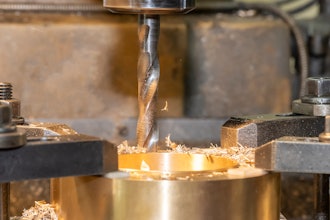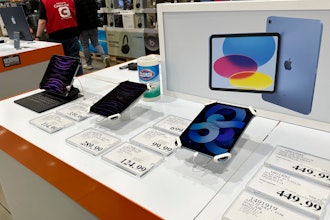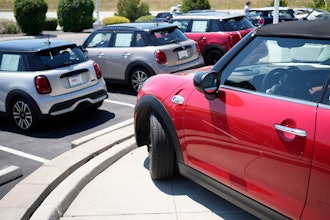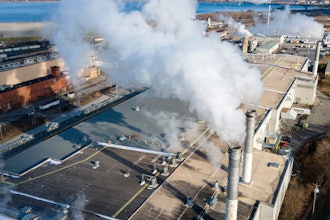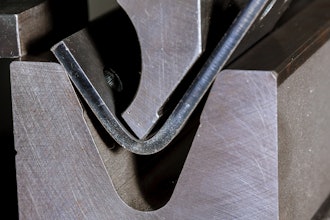- Maintains double-digit operating margins
- Lowers full-year sales and earnings outlook to reflect weaker global demand, but expects second-highest annual earnings in 2012
- Expects to generate strong cash from operations in 2012
Canton, OH - The Timken Company today reported sales of $1.1 billion in the third quarter of 2012, a decrease of 14 percent from the same period a year ago. The sales decline reflects weaker demand in many of the company's end markets, lower surcharges and the impact of currency, partially offset by improved pricing and the favorable impact of the Drives acquisition.
Timken generated income in the third quarter of $80.9 million, or $0.83 per diluted share, compared with $111.0 million, or $1.12 per diluted share during the same period a year ago. The decrease in earnings reflects lower sales volume, material surcharges and mix, partially offset by lower material costs, favorable pricing and lower manufacturing costs. Included in the third quarter 2012 results were expenses of $8.4 million, or $0.09 per diluted share, related to the previously announced closure of the St. Thomas plant in Ontario, Canada.
"As the quarter unfolded, the fragile global economy and declining market sector demand began to impact our business," said James W. Griffith, Timken president and chief executive officer. "End users are increasingly cautious, which translates into inventory adjustments and decreased short-term opportunity. Despite these challenges, we expect full-year 2012 earnings to be the second highest in the company's history, excluding the benefit of the CDSOA (Continued Dumping and Subsidy Offset Act) receipts recorded this year.
"Looking ahead, we are well-positioned to manage through the downturn and expect to leverage well," Griffith said. "We are making appropriate adjustments, including curtailing production schedules and carefully managing cash and expenses."
During the quarter, the company:
- Continued to align its manufacturing footprint with market needs, progressing on previously announced plans to close the St. Thomas bearing plant and refocusing its Tyger River plant in Union, S.C., on large bore bearing production;
- Progressed with planned investments to bring the intermediate steel bar finishing line on-stream, start up the in-line forge press to produce new large-diameter sound-center bars, as well as prepare the site for the new vertical continuous caster;
- Returned $83 million in capital to shareholders through quarterly dividends and the repurchase of 1.5 million shares of company stock in the quarter; and
- Announced the appointment of Christopher A. Coughlin and Richard G. Kyle as group presidents. Coughlin assumes leadership of the Mobile and Process Industries segments while Kyle oversees the Aerospace and Steel segments.
Nine Months' Results
Timken posted sales of $3.9 billion in the first nine months of 2012, up slightly from the same period in 2011. The increase primarily reflects the favorable impact of acquisitions, pricing and mix, which were partially offset by lower sales volume, surcharges and the impact of currency.
In the first nine months of 2012, the company generated income of $420.2 million, or $4.28 per diluted share. That compares with $345.2 million, or $3.48 per diluted share, earned in the same period last year. Earnings during the first nine months of 2012 benefited from pricing, lower material costs and acquisitions, partially offset by lower volume, lower material surcharges and higher selling and administrative expenses. Included in the first nine months of 2012 (reference Table 1) were CDSOA receipts of $68.4 million, net of tax, and charges of $26.1 million, net of tax, due to the announced closure of the St. Thomas plant.
Table 1: Year to Date 2012 Net Income and Diluted Earnings | ||
($ in Millions) | EPS | |
Net Income attributable to The Timken Company | $420.2 | $4.28 |
Less: CDSOA receipts, net of tax | $ 68.4 | $0.70 |
Add: Charges due to plant closure, net of tax | $ 26.1 | $0.27 |
Net Income, after adjustments | $377.9 | $3.85 |
Total debt as of September 30, 2012, was $488.9 million, or 17.2 percent of capital. The company had cash of $485.5 million, or $3.4 million net debt, at the end of the third quarter compared with net debt of $46.7 million at the end of 2011.
In the first nine months of 2012, the company generated $366.5 million in cash from operating activities with strong earnings and CDSOA receipts partially offset by discretionary pension contributions. Excluding discretionary pension and VEBA trust contributions of $245 million, net of tax, and the benefit of CDSOA receipts, free cash flow (operating cash after capital expenditures and dividends) was $289 million. In addition, the company used $112 million of cash to purchase 2.5 million shares of the company's stock. The company continues to maintain a strong balance sheet and ended the quarter with $1.4 billion of available liquidity.
Mobile Industries Segment Results
In the third quarter, Mobile Industries' sales were $396.9 million, down 10 percent from last year's third-quarter sales of $441.6 million. The benefit of the Drives acquisition and the strength of rail markets were more than offset by lower light vehicle and heavy truck market demand as well as currency.
EBIT for the segment was $37.9 million in the third quarter, or 9.5 percent of sales. This represents a 46 percent decrease from $69.5 million, or 15.7 percent of sales, in the same period a year ago, and was primarily driven by lower volume and charges of approximately $13 million related to the previously announced plant closures in St. Thomas and Sao Paulo, Brazil.
For the first nine months of 2012, Mobile Industries' sales were $1.3 billion, down 3 percent relative to the same period a year ago. EBIT for the first nine months of 2012 was $173.4 million, or 13.2 percent of sales, compared with $213 million, or 15.8 percent of sales, the prior year.
Process Industries Segment Results
Process Industries' third-quarter sales were $311.1 million, down 5 percent from $328.9 million for the same period a year ago. Lower demand across broad markets, primarily served through industrial distribution, and the negative effect of currency more than offset favorable pricing and the benefit of the Drives acquisition.
The segment's third-quarter EBIT was $60.1 million, or 19.3 percent of sales, down 21 percent from $75.6 million, or 23 percent of sales, for the same period a year ago. The decline in EBIT primarily resulted from lower volume and unfavorable mix, partially offset by pricing.
For the first nine months of 2012, Process Industries' sales were $1 billion, up 9 percent from the same period a year ago. The increase reflects the impact of acquisitions and pricing, partially offset by weaker demand as well as currency. EBIT for the first nine months of 2012 was $213.7 million, or 21.3 percent of sales, up 2 percent from the prior year's EBIT of $209.6 million, or 22.7 percent of sales. Pricing and acquisitions led to the increase, partially offset by lower volume and currency.
Aerospace and Defense Segment Results
Aerospace and Defense had third-quarter sales of $84 million, up 3 percent from $81.8 million for the same period last year. The increase reflects continued strength in defense markets, partially offset by weak civil aerospace and motion control market sectors.
Third-quarter EBIT was $7.7 million, or 9.2 percent of sales, up from a loss of $1.7 million, for the same period a year ago. The change reflects improved pricing and mix. The prior year also included a $5 million charge related to warranty reserves.
For the first nine months of 2012, Aerospace and Defense sales were $262.5 million, up 7 percent from the same period a year ago. The increase reflects higher volume, led by the defense sector, as well as favorable pricing and mix. EBIT for the first nine months of 2012 was $26.3 million, or 10 percent of sales, compared with EBIT of $2.4 million, or 1 percent of sales, in the same period a year ago, reflecting higher volume and favorable pricing and mix. The prior year included inventory write downs and warranty reserves totaling approximately $8 million.
Steel Segment Results
Sales for Steel, including inter-segment sales, were $377 million in the third quarter, down 25 percent from $501.5 million for the same period last year. The results reflect reduced shipments to the industrial and oil and gas market sectors and lower raw-material surcharges of approximately $70 million, partially offset by favorable pricing.
Third-quarter EBIT was $49.7 million, or 13.2 percent of sales, down 25 percent from $66.2 million, or 13.2 percent of sales, for the same period a year ago. EBIT benefited from pricing and lower material and manufacturing costs, which were more than offset by lower volume, mix and surcharges.
For the first nine months of 2012, Steel segment sales were $1.4 billion, down 5 percent from the same period last year. Raw-material surcharges decreased approximately $95 million from the same period a year ago. Lower shipments across all market sectors were partially offset by improved pricing. EBIT for the first nine months of 2012 was $226.6 million, or 16 percent of sales, compared with $196.8 million, or 13.2 percent of sales, for the same period a year ago. EBIT benefited from pricing and lower material costs, partially offset by lower volume and material surcharges.
Outlook
The company expects lower shipments to customers in many of its global markets in the fourth quarter. As a result, Timken now expects 2012 sales to be down 3 to 5 percent compared to 2011 with:
- Mobile Industries' sales down 4 to 6 percent for the year reflecting the impact of exited business due to the company's market strategy as well as year-end customer inventory adjustments;
- Process Industries' sales up 6 to 8 percent, driven by the full-year impact of acquisitions;
- Aerospace and Defense sales up 8 to 10 percent, driven by increased demand across most end markets, led by the defense sector; and
- Steel sales down 11 to 13 percent, driven by lower industrial end-market demand and surcharges, partially offset by improved pricing.
Timken now projects 2012 annual earnings to range from $4.75 to $4.95 per diluted share, which includes the one-time benefit of CDSOA receipts totaling $0.70 per share and the St. Thomas plant closure costs totaling approximately $0.30 per share.
Timken expects to generate strong cash from operations of approximately $535 million in 2012. Free cash flow is projected to be $145 million after making capital expenditures of about $300 million and paying about $90 million in dividends. Excluding discretionary pension and VEBA trust contributions of approximately $245 million, net of tax, and CDSOA receipts of approximately $70 million, net of tax, the company forecasts free cash flow of approximately $320 million in 2012.









